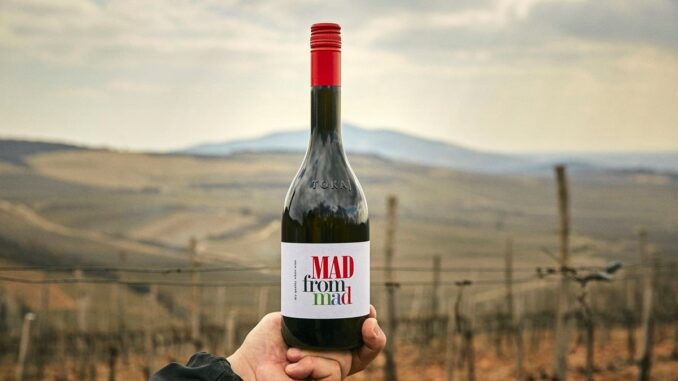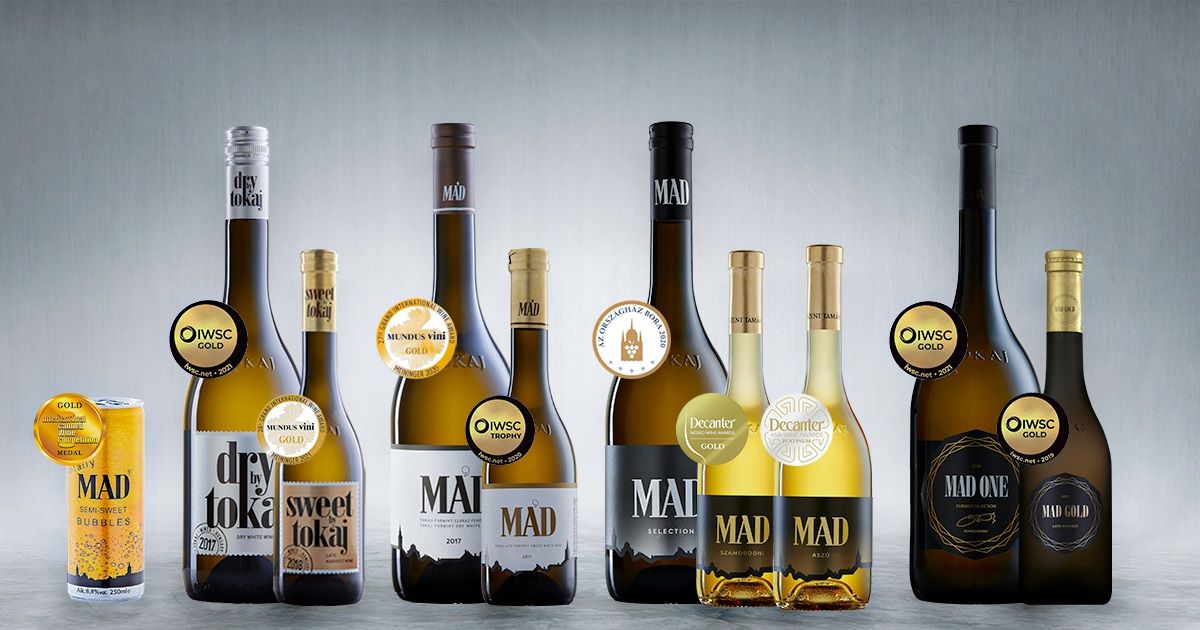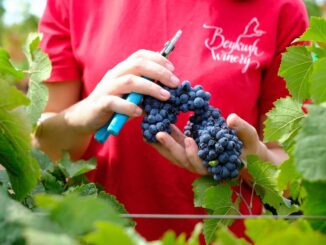
February is the month to go Mad. It is a month of biting, penetrating acidity and longevity. As well as volcanic, rhyolite-based soil, “puttonyos” baskets and the free-run juice of aszú berries.
February 3rd is National Gorin day, as well as National Allgemeiner, Biharboros, Damzemy, Grasă de Cotnari, Mehlweiss, Mosler (in Austria), Moslovac (in Croatia), Poshipon, Pošip, Schimiger, Šipon (in Sloveniaa), Som (in Transylvania) and Zopfner Day (in Germany).
But most people in the know celebrate it as National Furmint Day and nowhere is it celebrated more than in the region of Tokaj in the north-east of Hungary, in the foothills of the Carpathian Mountains.
Especially in the village of Mád, which is the most prestigious appellation of the Tokaj region and one of the highest in altitude.
The three main white varieties cultivated in the region are Furmint, Hárslevelű (both late ripeners), and Sárga Muskotály (known outside of Hungary as Muscat Blanc à Petits Grains). Furmint makes up approximately two-thirds of the 5,400 hectares of the region that is under vine.
The most famous Tokaji style is Tokaji Aszú, which is made using grapes that have undergone Botrytis or Noble Rot. Tokaji Aszú is a maceration of botrytised grapes and a base must/wine. The amount of Aszú berries used determines the final sweetness of the wine, as the spokesperson explained: “The puttonyos basket filled with 25 kilograms of Aszú berries is Furmint (also aka Mainak) which is a white Hungarian grape that gets name from “froment”, its wheat-gold colour.”
Furmint has been growing in the Tokaji region of north-eastern Hungary since at least the late 16th century. It is a late-ripening grape variety.
Tokaji Pezsgő Brut 2017 from Tokaj Nobilis, Barta Furmint Pezsgö 2016 are feted sparkling Furmints.
Szepsy Estate Furmint is available from Novel Wines (£34.99), and it was Istvan Szepsy who pioneered dry furmints with his wines now considered as some of the very best. There is also Disznoko Tokaji Aszu 5 Puttonyos.
For some of the best Hungarian wines, you have to go Mád. It is the Napa Valley of Hungary and was the world’s first appellation.
A royal decree made Tokaj-Hegyalja the first closed wine region in the world. The 1700 Classification was 56 years before the demarcation of the Douro Valley and 155 years before the 1855 Médoc Classification in Bordeaux.

UNESCO World Heritage Committee added the region to the World Heritage List as the “cultural landscape of the Tokaj-Hegyalja historical wine region” in 2002.
The king of Hungary, Emperor Franz Josef, sent Queen Victoria Tokaji Aszú wine every year on her birthday, one bottle for every month she had lived, twelve for each year. On her eighty-first and final birthday (1900), he sent 972 bottles.
Peter The Great ordered over six hundred barrels a year. Louis XIV called it “the wine of kings and kings of wines”. Other fans include Goethe, Beethoven and Pope Pius X.
Lazlo Mate Szepsi is considered the Dom Perugnonof Tokaji when he decided to make wine from shrivelled grapes after the harvest was postponed because of the threat of a Turkish invasion.
Quality dry Tokaji is a relatively new development, Thanks largely to István Szepsy at the Szent Tamás Winery; Topaz Tokaji aszu pairs with roast pineapple and caramelized apple dishes as well as panforte and chocolate. In Hungary, it is traditionally paired with foie gras or goose or duck liver parfait, poppyseed strudel, hazelnuts and walnuts. Try it with Sian food or Stilton.
The best accommodation in Mád is provided by the Hotel Botrytis. It is an excellent base to explore the region’s vineyards, 27 towns and villages and local non-vinoui attractions.
The Blessing Christ statue at Tarcal Old cemetery is a mini version of Rio’s Christ the Redeemer. It’s part of the 1400 km long Central European pilgrimage, Mária-út.
Close by are the castles of Rákóczi, Boldogko and Fuzer. The famous tarn of Mt. Megyer at Sárospatak in an abandoned millstone mine. The accumulating rainwater created a lake. A ferrata route has been created for the adventurous.
A chairlift takes you up and a toboggan run down from Mt. Magas which towers over Sátoraljaújhely.
People started to trade with wine in the area as early as the 16th century. Traditionally, the dominant grape varieties were furmint, hárslevelű (French: Feuille de Tilleul) and sárgamuskotály (Muscat Lunel). Today you can also find kövérszőlő, zéta (Oremus) and gohér.
Szamorodni was known as főbor (prime wine), but from the 1820s Polish merchants popularised the name samorodny, “self-grown”, being made from bunches of grapes containing a high proportion of Noble Rot.
Eszencia is one of the most exclusive wines in the world, although technically it can’t be called a wine because its high concentration of sugar means that its alcohol level never rises above 5-6 per cent. Eszencia is the juice of Aszú berries which runs off naturally from the vats in which they are collected during harvesting. It is THE sweet dessert wine.
The late harvest traditionally starts here on Day of St. Jude (28th October). Overripe grapes, sometimes partly covered with botrytis, are harvested well into November. Sometimes even in January. The wines are aged in barrels made from oak from the Zemplen forest.
Mád wine is available to purchase directly from www.alliancewine.com or by calling Alliance Wine on +44 (0)1505 506060.
Author Bio:
Kevin Pilley is a former professional cricketer and chief staff writer of PUNCH magazine. His humour, travel, food and drink work appear worldwide, and he has been published in over 800 titles.
Photographs courtesy of Mad Wine



Be the first to comment